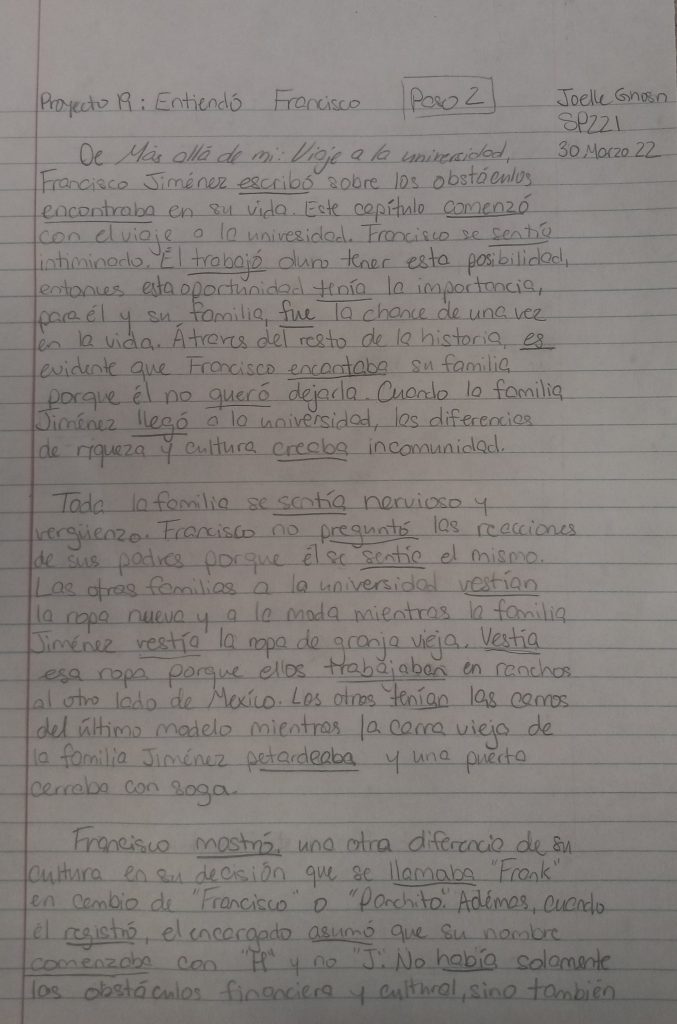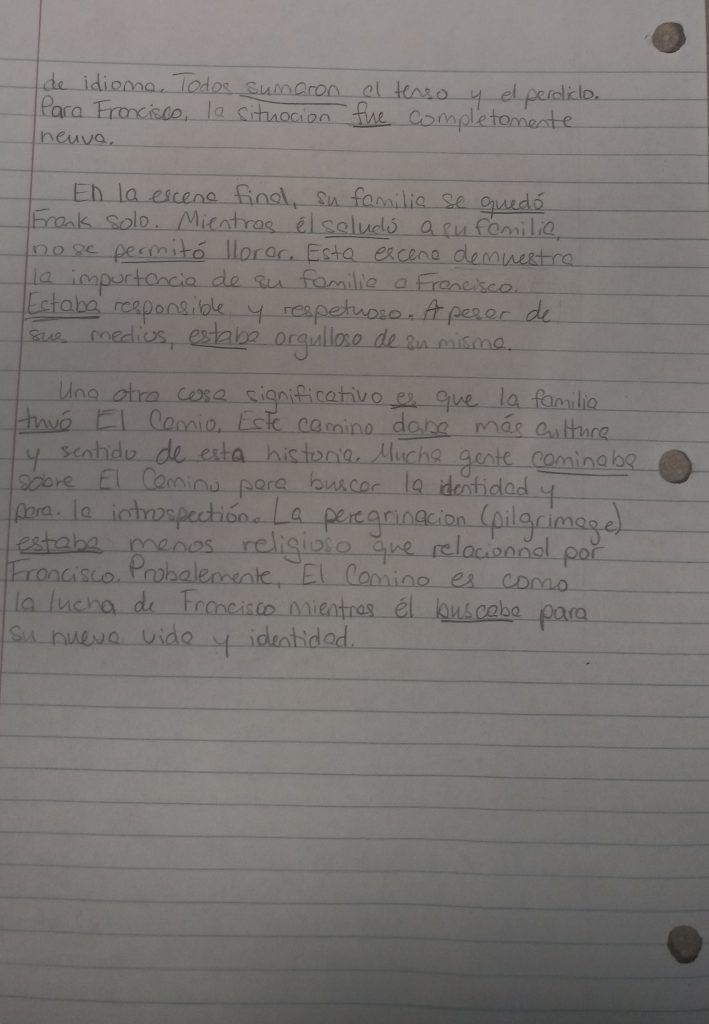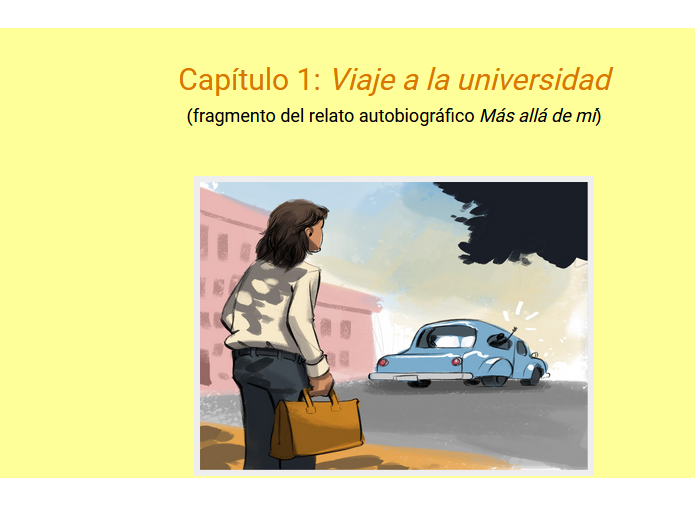Interpretive, Interpersonal, and Presentational Modes of Communication
Exploring Culture
In Spanish 221, the cultural exploration activities at the end of each unit were perfect starting points for gaining culturally significant parts of Spanish speaking countries. The topics within the assignments allowed students to choose between many different Spanish speaking countries, research a facet of the country’s culture, and then collect the information to share later in class.
After completing the cultural assignment individually, the class gathers to share what each learned. This allows students to compare the differences in cultures throughout various countries. I found it very helpful to compare the variety of information as each student comes with unique information. Further, I had proof of what several Spanish countries are truly like. I could compare the information to my own life and also to other cultures. This helped me form a greater picture of the Hispanic world. One of the key differences I learned between United States culture and Hispanic culture is the importance of independence and community. In the United States, independence is much more important than community. In Hispanic countries, community is so important that is affects the way they pace their day, what a household looks like, and how events and parties are done. This information changed my worldview by showing that there can be priorities in life that completely change the course of one’s daily habits. After learning the ways Hispanic people integrate community and relationships in their lives, I found myself doing similarly. I took the opportunity to focus less on tasks and deadlines and more on the people around me and the experiences I can savor. I worked through the stereotype that Hispanic people are all very similar when in fact each country is completely different from the other. I believe this stereotype was perpetuated by how many Americans view Latino and Hispanic as a racial descriptor rather than a broad ethnicity.
Engaging in Communities
With each passing interaction I have with a native Spanish speaking person, the more knowledge I gain in the language and culture. The people I have spoken with taught me things I never knew. I believe this one on one communication has changed my perception of Hispanic cultures, traditions, and daily life around the world. As there are very few Latinos in my community, each interaction has shown me new perspectives that help change my worldview.
This semester, my fluency and confidence in Spanish has increased enough for me to be able to aid customers who prefer to speak in Spanish. I have also had several chances to converse with native Spanish speakers. These gave me the opportunities to put my Spanish speaking ability on the spot and engage in legitimate conversation. I improved my ability to circumnavigate when my vocabulary is lacking. Most importantly, the pressure around communicating in Spanish has decreased each time.
Interpersonal Communication
Unlike any experience I have had, I was able to hold personal conversation with native speakers through TalkAbroad. In these conversations, we spoke of information relevant to the unit’s topic such as culture, stereotypes, and differences among countries.
“Es muy parecido entro España y latin américa. Hay diferencias entre la pronunciación de las palabras. Por ejemplo, en latín américa, decimos sorro o con razón. Y en España, dicen “thorro” con la theta y “con rathon” también. Hay diferencias en la pronunciación. También, hay diferencias. . .Hay algunas palabras diferentes. Por ejemplo, en latín américa, decimos jugo de frutas y en España, dice sumos de frutas, por ejemplo. En latín américa, decimos la persona y en España pueden decir el chaval, por ejemplo. Pero son diferencias entre palabras en latín américa. Hay muchas palabras diferentes. Entonces, es un poco. . . y hay diferencia en la cultura. Es una cultura muy diferente de la cultura de Europa.”
TalkAbroad conversation with Ernesto Josue
Through TalkAbroad, I communicated first and foremost. If my conversation partner said something I did not understand, I would ask them to repeat it and explain words I do not know. If I wanted to say something that I did not know in Spanish, I would define the word I wanted as best I could and the last resort to look up a difficult like “fox”. Due to the intense nature of the class, the conversations with native speakers was easy and enjoyable. I was able to improve my spontaneous Spanish speaking while learning from the person I spoke with. In the future, I would like to talk slower and not rush myself to ask and answer questions. Reviewing verb conjugations more frequently would also help me to speak more fluently, as well.
Presentational Speaking
Another important type of activity I completed in this semester of Spanish was presentation projects. In this presentation, I spoke about a realization I had about my identity as a kid growing up in several different cultures.
While I prepared beforehand for each recorded presentation, I occasionally found it difficult to say exactly what I wanted to when I began recording. However, I learned to move on from small mistakes and focus on accurate communication instead. These spoken projects helped me to greatly improve my pronunciation and be able to think and speak in Spanish simultaneously. In the future, I will push myself to use a greater mixture of tenses when speaking.
Presentational Writing
Another challenging activity I participated in this semester was writing essays in class. The only resources I was allowed to use during these essays were a dictionary and vocabulary list.


The in-class essays challenged me to write succinctly, effectively use correct grammar, and explain information from the unit. These projects pushed me to become very familiar with verb tenses, understand the unit information, and to prepare ahead of time. The hardest part is still recalling specific vocabulary without consulting a dictionary. Yet, compared to the beginning of the semester, I have gained a much more expansive vocabulary as well as being able to guess what a word likely translates to by using stems. I think I was best at offering a large variety of verb conjugations in my essays as I find it easy to see which one I need while I write. For the future, I would like to continue expanding my vocabulary so that I do not feel the need to consult a dictionary.
Interpretive Listening
Another type of activity important to this semester of Spanish was listening skills. To improve our abilities, we listened to many audio samples in homework as well as for projects such as a video made by a Spanish influencer.
In the video about Escudero’s life as an influencer, the most difficult part was understanding his accent and dialect of Spain. I was able to overcome this problem by slowing down the video and watching each segment repeatedly until I was sure what words he was saying. Then, I watched the video a final time to understand the meaning of the video. I enjoyed how personal the video was. Escudero talked how his career intersected with his personal life and relationships. By the end of the video, I was better able to understand the life of an influencer and what kind of challenges they may face. I also became more familiar with the Spain dialect. Compared to previous activities involving a Spaniard accent, I was able to understand Escudero even quicker than before. Most importantly, I genuinely feel that I am effectively able to comprehend spoken Spanish better than ever before.
Interpretive Reading
Also in this semester, we read together in class Pagemaster: El Guardian de Las Palabras. We also read many authentic sources such as Más Allá de Mí.

All of the readings were challenging as they introduced new Spanish vocabulary that often had no cognates in English. They were, alternatively, very helpful to see the new vocabulary in context to solidify the words’ meanings. Using a dictionary and context clues, the meaning could be understood. The most helpful part of these readings were seeing conjugated verbs in a mixture of tenses. Each reading displayed how tenses are mixed to tell a story. Overall, the readings were helpful to improve grammar, vocabulary, and learn culture at the same time. Most importantly to me, most all of the readings were written by native speakers which is helpful to see a realistic use of the language. The readings increased in difficulty with each unit which allowed me to have substantial and efficient language learning progress.